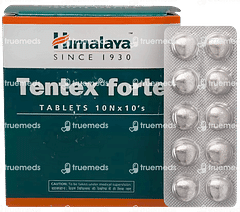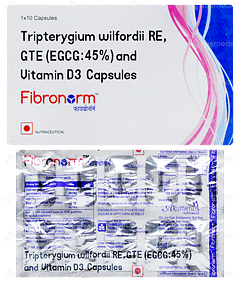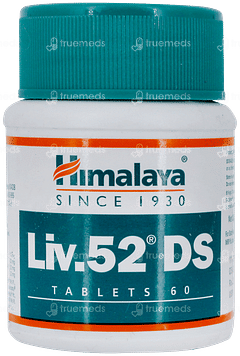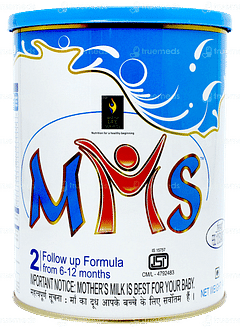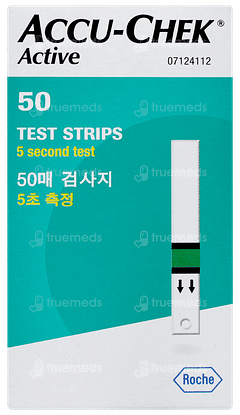Myasthenia Gravis
Myasthenia gravis (MG) is a chronic autoimmune neuromuscular disorder that causes weakness and fatigue in voluntary muscles, particularly those controlling eye movements, facial expressions, and limb and respiratory functions. The condition occurs when the body's immune system produces antibodies that interfere with the communication between nerves and muscles, leading to muscle weakness that worsens with activity and improves with rest.
Last updated on : 16 Dec, 2024
Read time : 14 mins

Overview of Disease
Myasthenia gravis (MG) is a complex autoimmune condition that affects the communication between nerves and muscles, leading to muscle weakness and fatigue. It occurs when the body's immune system mistakenly attacks the neuromuscular junctions, disrupting the transmission of signals from nerves to muscles. This article aims to provide a comprehensive overview of MG, including its causes, symptoms, stages, types, diagnosis, and treatment options.
What is Myasthenia Gravis?
Myasthenia gravis is a long-term autoimmune disorder that targets the neuromuscular junction, causing varying degrees of skeletal muscle weakness. The condition is characterised by the production of antibodies that block or destroy the receptors for acetylcholine, a neurotransmitter responsible for transmitting signals from nerve cells to muscle cells. As a result, the communication between nerves and muscles is impaired, leading to muscle weakness and fatigue that typically worsens with activity and improves with rest. The severity and distribution of muscle weakness can vary among individuals with myasthenia gravis.
Key Factors about Myasthenia Gravis
| Category | Details |
| Also Referred as | MG, Ocular Myasthenia Gravis, Generalised Myasthenia Gravis, Transient Neonatal Myasthenia Gravis |
| Commonly Occurs In | Women under 40 years old, men over 50 years old |
| Affected Organ | Muscles, nervous system, thymus gland |
| Type | Autoimmune, neuromuscular disorder |
| Common Signs | Muscle weakness, fatigue, visual disturbances, drooping eyelids, double vision, difficulty swallowing, breathing difficulties, shortness of breath |
| Consulting Specialist | Neurologist |
| Treatement Procedures | Medication to suppress the immune system, plasmapheresis, surgical removal of the thymus gland |
| Managed By | Anticholinesterase inhibitors (pyridostigmine), Steroids (prednisolone), and Immunosuppressants (azathioprine and cyclosporine) |
| Mimiciking Condition | Lambert-Eaton (myasthenic) syndrome, Eaton-Lambert syndrome |
Types of Myasthenia Gravis
Myasthenia gravis can be classified into different types based on factors such as age of onset, associated conditions, and antibody profiles. The main types of MG include:
Early-onset MG: This type of myasthenia gravis develops in patients under the age of 40, typically in young women. It is often associated with an enlarged thymus gland (thymic hyperplasia).
Late-onset MG: This type of myasthenia gravis develops in patients over the age of 60, typically in older men. It is less commonly associated with thymic abnormalities.
Thymoma-associated MG: In this type, MG is associated with tumours of the thymus gland (thymoma).
MG with anti-MuSK antibodies: This type is characterised by the presence of antibodies against muscle-specific kinase (MuSK), a protein involved in the formation of the neuromuscular junction.
Ocular MG: In this type, muscle weakness is limited to the eyes, causing symptoms such as drooping eyelids (ptosis) and double vision (diplopia).
Seronegative MG: This type is diagnosed when a patient has clinical signs and symptoms of MG but tests negative for both AChR and MuSK antibodies.
Early Signs of Myasthenia Gravis
The early signs of myasthenia gravis can be subtle and may vary from person to person. Some of the most common early symptoms include:
Difficulty with eye movements, such as drooping eyelids (ptosis) or double vision (diplopia)
Weakness in the face, throat, and neck muscles, leading to difficulty with facial expressions, speaking, and swallowing
Muscle weakness in the arms and legs, causing difficulties with physical activities
Breathing problems, including shortness of breath and respiratory failure
These myasthenia gravis symptoms may fluctuate throughout the day, with weakness often worsening as the day progresses or after prolonged activity. As the condition progresses, the symptoms may become more pronounced and affect a wider range of muscle groups.
Symptoms of Myasthenia Gravis
The symptoms of myasthenia gravis can affect various muscle groups in the body. These include:
Eye muscles: Ocular myasthenia leads to weakness in the eye muscles, causing drooping of one or both eyelids (ptosis) and blurred or double vision (diplopia).
Face, throat, and neck muscles: Facial muscle weakness results in difficulty making expressions, slurred or nasal speech (dysarthria), and trouble swallowing (dysphagia). There may also be weakness and fatigue in the jaw and neck muscles.
Arm and leg muscles: Weakness in the arms, hands, fingers, legs, and neck affects lifting, climbing stairs, and performing daily tasks such as brushing teeth.
Breathing problems: Breathing issues range from mild shortness of breath (dyspnea) to severe conditions like myasthenic crisis, where weakness in the respiratory muscles can lead to significant breathing difficulties and may require mechanical ventilation.
Doctors score how severe MG symptoms are using 5 stages:
Eye muscle weakness only: Symptoms are limited to the eye muscles.
Mild muscle weakness: Mild muscle weakness without significant impact on daily activities.
Medium muscle weakness: Moderate muscle weakness that affects daily activities but does not compromise vital functions like breathing.
Severe muscle weakness: Significant muscle weakness that affects multiple areas of the body and can be life-threatening.
Severe trouble breathing (myasthenic crisis): Muscle weakness is severe enough to cause respiratory failure and may require immediate medical intervention.
Stages of Myasthenia Gravis
As per Myasthenia Gravis Foundation of America, the stages of Myasthenia gravis are as foloows:
Class I: Muscle weakness is limited to the extraocular muscles, affecting eye movements.
Class II: Muscle weakness extends beyond the extraocular muscles, involving the face, bulbar region (speech, swallowing), or limbs.
Class IIa: Muscle weakness affects the extraocular muscles and the muscles of the face and/or bulbar region.
Class IIb: Muscle weakness affects the extraocular muscles and the muscles of the limbs.
Class III: Muscle weakness is more widespread, involving the face, bulbar region, and limbs.
Class IIIa: Muscle weakness affects the muscles of the face, bulbar region, and proximal limbs.
Class IIIb: Muscle weakness affects the muscles of the face, bulbar region, and distal limbs.
Class IV: Muscle weakness is severe and affects all muscle groups, including respiratory muscles.
Class IVa: Muscle weakness affects all muscle groups, including respiratory muscles, but without major respiratory impairment.
Class IVb: Muscle weakness affects all muscle groups, including respiratory muscles, with major respiratory impairment.
Class V: Muscle weakness is severely acute and rapid, often requiring immediate hospitalisation.
Causes of Myasthenia Gravis
Myasthenia gravis is an autoimmune disorder influenced by several factors, including:
Autoimmune disorder: Myasthenia gravis occurs when the immune system attacks acetylcholine receptors at the neuromuscular junction, impairing nerve-muscle communication and leading to muscle weakness.
Genetic factors: In rare cases, congenital myasthenic syndromes can occur in children due to genetic mutations affecting the neuromuscular junction. These genetic factors can lead to the development of myasthenia gravis symptoms from birth or early childhood.
Thymus gland abnormalities: Abnormalities in the thymus gland, such as thymomas or thymic hyperplasia, are commonly associated with myasthenia gravis. The thymus plays a role in immune system development, and its abnormalities can contribute to the disorder.
Hormonal influences: Hormonal changes, particularly in women during pregnancy or menopause, can influence the onset and progression of myasthenia gravis, suggesting a hormonal component to the disease.
Environmental triggers: Infections and stress can trigger or worsen myasthenia gravis in those predisposed, as they may provoke immune responses that affect the neuromuscular junction.
Risk Factors
Several factors can increase the risk of developing myasthenia gravis. These include:
Age (typically between 20-30 years for women, 60-70 years for men)
Women
Family history of autoimmune diseases
Presence of thyroid disease
Certain genetic markers, such as HLA-B8 and DR3
Other autoimmune disorders (e.g., rheumatoid arthritis, lupus)
Hormonal changes (e.g., pregnancy, menopause)
Recent infections or significant stress
Complications
Myasthenia gravis can lead to several complications that impact overall health and quality of life. These include:
Myasthenic crisis: This is a life-threatening medical emergency that requires immediate treatment. It occurs when the muscles that control breathing become severely weakened, leading to respiratory failure.
Long-term medication side effects: Patients with myasthenia gravis may experience side effects from long-term use of medications, such as opportunistic infections, lymphoproliferative malignancies, and adverse effects of steroids, including osteoporosis, hyperglycemia, cataracts, weight gain, and hypertension.
Cholinergic crisis: This complication occurs due to overstimulation of nicotinic and muscarinic receptors caused by excessive acetylcholine levels, leading to symptoms like cramps, lacrimation, salivation, diarrhoea, and blurred vision.
Thyroid issues: Some people with myasthenia gravis may develop thyroid problems, such as an overactive or underactive thyroid gland, which can further complicate their condition.
Autoimmune conditions: People with myasthenia gravis are at a higher risk of developing other autoimmune diseases, such as rheumatoid arthritis or lupus.
Prevention of Myasthenia Gravis
Measures that may help reduce the risk or manage the condition effectively include:
Early diagnosis: Early diagnosis and prompt treatment of myasthenia gravis can help manage symptoms and prevent complications. Regular medical check-ups and attention to early signs of muscle weakness or other symptoms can lead to earlier intervention and better disease management.
Avoiding triggers: While specific triggers for MG are not always identifiable, managing stress and avoiding infections can be beneficial. Reducing exposure to potential environmental triggers and maintaining overall health can help mitigate the impact of the condition.
Managing autoimmune conditions: Individuals with a family history of autoimmune diseases should be caeful about monitoring their health. Early management of other autoimmune disorders and regular consultations with doctors can help in understanding and managing potential risks associated with myasthenia gravis.
Regular monitoring: For those diagnosed with myasthenia gravis, regular monitoring and adherence to treatment plans can help control symptoms and prevent severe complications.
Diagnosis & Tests
Diagnosing myasthenia gravis involves a combination of clinical evaluation and specialised tests. These include:
Medical history and physical examination: A thorough medical history and physical exam are essential to identify symptoms and rule out other conditions. Your doctor will ask about your symptoms, their severity, and when they began. They will also perform a physical examination to assess muscle strength and reflexes.
Blood tests: Blood tests can identify the presence of abnormal antibodies that attack muscle receptors, which is a hallmark of myasthenia gravis. The most common antibody tested for is the acetylcholine receptor antibody, which is present in around 80–90% of individuals with generalised myasthenia gravis.
Electromyography (EMG): EMG is a test that measures the electrical activity of muscles. In myasthenia gravis, EMG can reveal abnormalities in muscle functioning, such as decreased muscle response to repetitive nerve stimulation. This test can help differentiate myasthenia gravis from other neuromuscular disorders.
Repetitive nerve stimulation: Repetitive nerve stimulation is a specific type of EMG test that involves stimulating a nerve multiple times and measuring the muscle response. In myasthenia gravis, the muscle response decreases with repeated stimulation, indicating a problem with nerve-to-muscle transmission.
Tensilon test: This test involves administering a medication called edrophonium chloride, which temporarily improves muscle weakness in individuals with myasthenia gravis. If muscle strength improves significantly after the medication is given, it suggests a diagnosis of myasthenia gravis.
Imaging tests: In some cases, imaging tests such as CT or MRI scans may be used to check for the presence of a thymoma, which is a tumour on the thymus gland that can occur in some individuals with myasthenia gravis. Imaging tests can also help rule out other conditions that may be causing symptoms similar to myasthenia gravis.
Treatment & Management
The treatment of myasthenia gravis aims to manage symptoms, improve muscle function, and enhance the overall quality of life. This may include:
Medication: Anticholinesterase inhibitors, corticosteroids, and immunosuppressive medicines are prescribed to collectively help to control myasthenia gravis and improve quality of life.
Thymectomy: In some cases, particularly in patients with thymoma (a tumour of the thymus gland), surgical removal of the thymus gland (thymectomy) may be recommended.
Intravenous immunoglobulin (IVIG): This therapy involves administering a concentrated solution of antibodies derived from healthy donors. IVIG helps to regulate the immune system and improve muscle strength in myasthenia gravis patients.
Plasmapheresis: This procedure involves removing the abnormal antibodies from the patient's blood and replacing them with healthy plasma. Plasmapheresis can provide rapid relief of myasthenia gravis symptoms, especially during acute exacerbations.
Complement inhibition: Eculizumab and ravulizumab are two FDA-approved medications that target the complement system, a part of the immune system that contributes to muscle weakness and inflammation in myasthenia gravis.
Medication for Myasthenia Gravis
The first-line medication for the treatment of myasthenia gravis is pyridostigmine, an anticholinesterase inhibitor. This medication enhances the transmission of electrical signals between nerves and muscles, leading to improved muscle function and reduced fatigue. Steroids, such as prednisolone, are used to suppress the immune system's response and are often taken in combination with other medications for severe symptoms. Immunosuppressants, like azathioprine and cyclosporine, can be used alongside steroids or anticholinesterase medications to further suppress the immune system. In emergency situations or severe cases, intravenous immunoglobulin and plasmapheresis may be used. More recent FDA-approved treatments, such as eculizumab and ravulizumab, are administered through intravenous infusions or subcutaneous injections.
When to See a Doctor?
If you experience any symptoms suggestive of myasthenia gravis, such as muscle weakness, difficulty swallowing, or vision problems, it is crucial to consult a doctor. Early detection and treatment can significantly improve the management of the condition and prevent potential complications. If you have already been diagnosed with myasthenia gravis and notice a sudden worsening of symptoms, particularly breathing or swallowing difficulties, seek immediate medical attention.
Key Takeaways
Myasthenia gravis (MG) is a chronic autoimmune disorder that causes muscle weakness and fatigue.
Treatment for myasthenia gravis involves a combination of medications, surgical interventions, and supportive therapies.
Medications used to manage myasthenia gravis include anticholinesterase medications, steroids, immunosuppressants, intravenous immunoglobulin, and plasmapheresis.
Newer FDA-approved treatments, such as eculizumab and ravulizumab, target specific immune mechanisms to reduce symptoms.
Early detection and treatment are crucial for effectively managing myasthenia gravis and preventing complications.
If you suspect you have myasthenia gravis or experience a worsening of symptoms, consult a doctor promptly and seek immediate medical attention for sudden breathing or swallowing difficulties.
FAQs
Can you live a full life with myasthenia gravis?
With proper treatment and management, most individuals with myasthenia gravis can lead full and active lives, as severe disabilities are extremely rare.
Can myasthenia gravis be cured?
Currently, there is no known cure for myasthenia gravis, but effective treatments are available to manage symptoms and improve quality of life.
What is end stage myasthenia gravis?
End-stage myasthenia gravis is not a well-defined term, but severe worsening of symptoms, especially those affecting breathing and swallowing, can lead to life-threatening complications called myasthenic crises.
What foods should I avoid with myasthenia gravis?
There are no specific dietary restrictions for myasthenia gravis, but maintaining a balanced diet is crucial. Avoiding tough, hard-to-chew foods may help with eating and swallowing difficulties.
How can I improve myasthenia gravis naturally?
While there are no natural cures, lifestyle adjustments such as rest, balanced diet, sufficient sleep, gentle exercise, and energy conservation can help manage symptoms.
What is the root cause of myasthenia gravis?
Myasthenia gravis is an autoimmune disorder where the immune system mistakenly attacks the neuromuscular junctions. The exact reasons are not fully understood but may involve genetic and environmental factors.
What deficiency causes myasthenia gravis?
Myasthenia gravis is not directly caused by any specific deficiency. It is an autoimmune disorder that affects the communication between nerves and muscles.
Is massage good for myasthenia gravis?
Gentle massage may help relax muscles and reduce stress in myasthenia gravis patients. However, it is essential to consult with a doctor before starting any new therapy.
Is myasthenia gravis a painful disease?
Myasthenia gravis does not typically cause pain directly, but muscle weakness and fatigue can lead to discomfort and strain.
What are the risks of surgery with myasthenia gravis?
Myasthenia gravis patients may have an increased risk of complications during and after surgery, such as respiratory problems or prolonged muscle weakness. Close monitoring and proper management are essential.
References
Johns Hopkins Medicine. (n.d.). Myasthenia gravis. Retrieved from https://www.hopkinsmedicine.org/health/conditions-and-diseases/myasthenia-gravis
National Institute of Neurological Disorders and Stroke. (2024). Myasthenia gravis. Retrieved from https://www.ninds.nih.gov/health-information/disorders/myasthenia-gravis
National Organization for Rare Disorders. (2022). Myasthenia gravis. Retrieved from https://rarediseases.org/rare-diseases/myasthenia-gravis/
Muscular Dystrophy Association. (2023). Myasthenia gravis. https://www.mda.org/disease/myasthenia-gravis
Beloor Suresh, Ashithkumar, and Ria Monica D. Asuncion. (2024). Myasthenia gravis. StatPearls, StatPearls Publishing. Retrieved from http://www.ncbi.nlm.nih.gov/books/NBK559331/
Check Related Salts
Latest health articles
Top Health Essentials
Disclaimer
Top-Selling Medicines:
...View more
Top-OTC medicines:
...View more
Company
About UsHealth ArticleHealth StoriesDiseases & Health ConditionsAll MedicinesAll BrandsNeed HelpFAQSubscribe
Registered Office Address
Grievance Officer
Download Truemeds

Contact Us
Our customer representative team is available 7 days a week from 9 am - 9 pm.
v3.7.10
Our Payment Partners





































